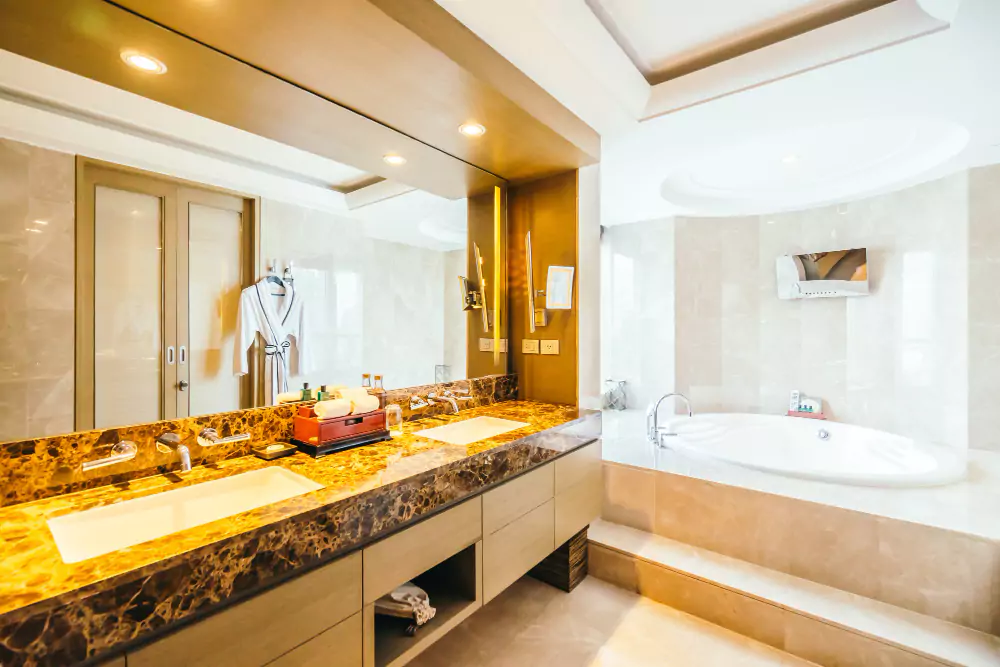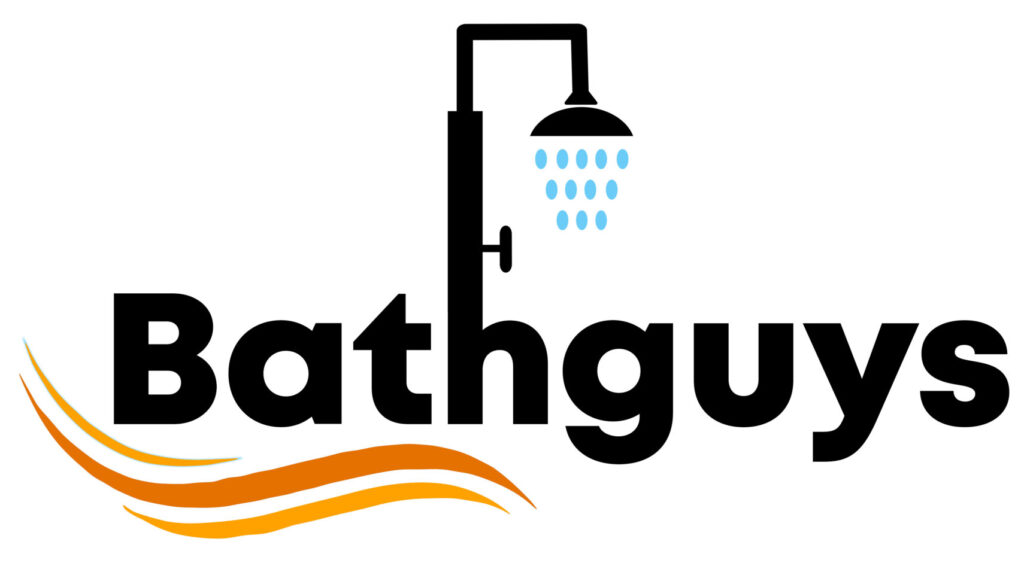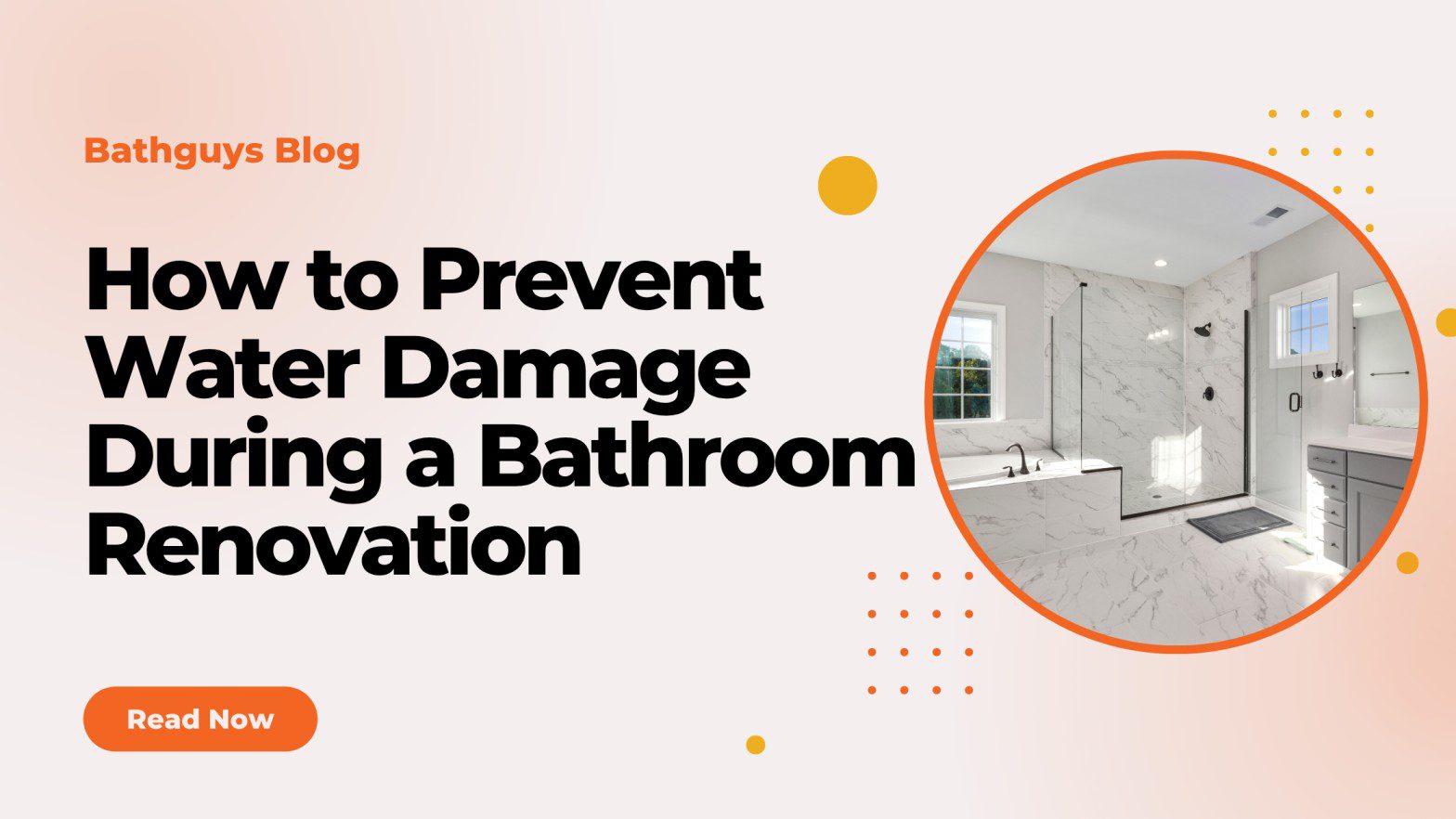Renovating your bathroom is an exciting step toward creating a more modern, beautiful, and functional space. But if you’re not careful, it can also lead to one of the most common and costly issues homeowners face — water damage. Whether it’s from hidden leaks, poor plumbing work, or a missed waterproofing step, water damage during a bathroom renovation can cause long-term structural problems, mold growth, and expensive repairs.
In this blog, we’ll guide you through how to prevent water damage during a bathroom renovation. With the right planning, materials, and professional guidance, you can avoid headaches and protect your home. If you’re in Toronto or the GTA, this guide will help you make smart choices and keep your renovation project worry-free from start to finish.
Table of Contents
Water Damage Risks During Bathroom Renovations
Water damage is one of the biggest risks during a bathroom renovation, especially if the project involves plumbing work, new fixtures, or changes to the layout. Bathrooms are high-moisture areas, and even small mistakes can lead to big problems if water isn’t properly managed.

One of the most common causes of water damage is poor waterproofing. If shower walls, floors, or seams aren’t sealed correctly, water can seep into the underlying structure. Over time, this leads to mold growth, wood rot, and damage to drywall or subfloors. Another common risk is leaky plumbing connections, which often go unnoticed until after the project is complete. Whether it’s an improperly installed faucet or a loose pipe joint behind the wall, these hidden leaks can silently cause damage for months.
Renovations involving structural changes also pose a risk. For instance, moving a toilet or shower without properly planning drainage or venting can create weak points where water may pool or overflow. Even something as simple as using the wrong type of grout or caulking around fixtures can allow moisture to sneak in.
In short, skipping small but important steps during a renovation—like sloping the floor correctly toward the drain, using moisture-resistant drywall, or sealing corners with waterproof membrane—can leave your bathroom vulnerable. That’s why knowing how to prevent water damage during a bathroom renovation is essential for protecting your investment.
Step‑by‑Step Preventive Renovation Guide
Preventing water damage during a bathroom renovation starts with careful planning and attention to detail. Here’s a step-by-step guide to help homeowners and contractors complete a safe, leak-free remodel.
Step 1: Plan the Renovation with Moisture Control in Mind
Before any work begins, assess the current condition of your bathroom. Identify problem areas such as water stains, peeling paint, or soft spots in the floor. Plan your renovation layout to optimize water flow, drainage, and ventilation.
Step 2: Use Water-Resistant Materials
Choose high-quality, moisture-resistant building materials like cement backer board instead of standard drywall, and opt for porcelain or ceramic tiles that are durable and waterproof. Use waterproof paint and primers, especially on walls near tubs and showers.
Step 3: Install Proper Waterproofing Systems
Apply a waterproof membrane on shower walls, floors, and anywhere water might splash. Waterproofing systems—such as liquid rubber membranes or waterproof backer boards—act as a critical barrier against leaks. Don’t skip waterproof tape at corners and seams.
Step 4: Hire Qualified Plumbing Experts
Faulty plumbing is a major cause of water damage during bathroom renovations. Always hire licensed professionals to handle pipework, fixture installations, and any changes to drainage systems. Make sure they perform pressure tests to detect leaks before sealing walls.
Step 5: Slope Floors Correctly
Ensure the bathroom floor, especially in wet zones like the shower area, is properly sloped toward the drain. Incorrect slope can lead to water pooling and slow drainage, increasing the risk of damage over time.
Step 6: Seal All Gaps and Joints
Use high-quality silicone caulk to seal joints around bathtubs, sinks, toilets, and shower enclosures. Recheck for gaps around plumbing penetrations and corners. This step is crucial for keeping water from sneaking into hidden areas.
Step 7: Improve Ventilation
Install or upgrade the bathroom exhaust fan to reduce humidity and prevent condensation buildup. Proper ventilation is key to reducing the risk of mold and mildew growth, which often results from lingering moisture.
Step 8: Perform a Final Inspection
Before completing the renovation, do a thorough inspection. Check for leaks, test water pressure, and confirm that all waterproofing has been properly applied. Use moisture meters if needed to ensure everything is dry and secure.
Common Waterproofing and Renovation Mistakes to Avoid
Even a well-planned bathroom renovation can lead to water damage if key steps are overlooked. To ensure your project is durable and leak-free, it’s essential to avoid these common waterproofing and renovation mistakes:
1. Skipping Professional Waterproofing
DIY waterproofing might seem cost-effective, but improper application can lead to major damage over time. Using incorrect materials or applying them unevenly leaves gaps where water can seep in. Always use industry-approved systems and consider hiring a professional for best results.
2. Not Waterproofing the Entire Wet Area
A frequent mistake is only waterproofing the shower or tub area. Moisture can travel through tile joints, grout lines, and wall cavities. Waterproof all wet zones, including the floor outside the shower, walls behind vanities, and around the toilet.
3. Using Regular Drywall Instead of Cement Board
Standard drywall absorbs moisture and breaks down over time, especially in humid environments. Installing it behind tiles or near showers is a major mistake. Always use moisture-resistant cement board or backer board designed for wet areas.
4. Poor Drainage Slope
If your floor isn’t sloped correctly toward the drain, water can pool and cause long-term subfloor damage. This is especially critical in walk-in showers. Always double-check that your renovation plan includes proper slope and drainage angles.
5. Failing to Seal Fixtures and Joints
Unsealed gaps around faucets, toilets, tubs, and shower bases allow water to penetrate behind walls and under flooring. Use high-quality silicone caulking to seal all joints, corners, and fixture edges for maximum protection.
6. Ignoring Ventilation Upgrades
Even with perfect waterproofing, trapped humidity can lead to mold and rot. Failing to install or upgrade an exhaust fan is a common oversight. Proper bathroom ventilation is essential for moisture control and long-term durability.
7. Rushing the Curing Process
Another common issue is not allowing enough time for waterproofing membranes, adhesives, or grout to cure before using the bathroom. This can compromise the integrity of your waterproofing system. Always follow manufacturer guidelines for drying and curing times.
8. Overlooking Plumbing Checks
Renovating without checking or replacing old pipes is risky. Leaky plumbing behind new walls or floors can undo all your waterproofing work. Have a licensed plumber inspect your lines before closing up any surfaces.
Comparative Table: Waterproofing Best Practices vs Common Mistakes
When planning a bathroom renovation, understanding the difference between correct waterproofing practices and common errors is essential to avoid water damage. Below is a step-by-step comparison table outlining what to do vs what to avoid:
| Step | Best Practice (Do This) | Common Mistake (Avoid This) |
| 1. Planning | Consult a renovation expert and create a waterproofing strategy. | Rushing into renovations without a waterproofing plan. |
| 2. Materials | Use waterproof membranes, cement boards, and moisture-resistant adhesives. | Using regular drywall or low-quality products not made for wet areas. |
| 3. Application | Apply waterproofing evenly and according to manufacturer instructions. | Uneven application or missing key areas like corners and niches. |
| 4. Area Coverage | Waterproof all wet zones, including shower walls, floors, behind vanities, and near toilets. | Only waterproofing the shower stall or tub area. |
| 5. Drainage | Ensure proper slope toward the drain to prevent pooling. | Incorrect or flat slope causing water to sit and damage flooring. |
| 6. Sealing Fixtures | Use high-quality silicone to seal all joints and fixture bases. | Leaving gaps around faucets, toilets, and tubs unsealed. |
| 7. Ventilation | Install or upgrade an exhaust fan to manage moisture levels. | Ignoring ventilation, which leads to condensation and mold. |
| 8. Curing Time | Allow full drying and curing time for all waterproof layers and adhesives. | Using the bathroom too soon, weakening waterproofing integrity. |
| 9. Plumbing Check | Inspect and update plumbing before finishing walls or floors. | Skipping plumbing checks, risking hidden leaks. |
By following waterproofing best practices and avoiding common mistakes, you can ensure a longer-lasting, water-damage-resistant bathroom renovation.
Benefits of Proper Water Damage Prevention
Preventing water damage during your bathroom renovation is more than just a precaution—it’s a smart investment. Here are the key benefits you gain by ensuring proper water damage prevention:

1. Extended Lifespan of Your Renovation
When waterproofing is done correctly, your bathroom materials—like tiles, flooring, and drywall—stay protected from moisture. This extends the overall life of your renovation and reduces the need for frequent repairs.
2. Protection Against Mold and Mildew
Excess moisture creates a breeding ground for mold and mildew, which can affect your health and indoor air quality. Proper waterproofing prevents dampness, keeping your bathroom clean, safe, and mold-free.
3. Reduced Maintenance Costs
Preventing water damage from the start saves you money in the long run. It eliminates the need for costly repairs like replacing soaked drywall, warped vanities, or rotten subfloors caused by leaks.
4. Improved Structural Integrity
Unchecked water damage can weaken the structural foundation of your home. By protecting walls, floors, and fixtures with water-resistant materials and systems, you maintain your home’s integrity and safety.
5. Increased Home Value
A well-renovated, water-tight bathroom adds resale value to your home. Buyers appreciate moisture-resistant features and the peace of mind that comes with knowing the bathroom is built to last.
6. Peace of Mind
Proper water damage prevention removes the worry of hidden leaks or long-term deterioration. It ensures your bathroom renovation stands the test of time, giving you confidence in your investment.
Conclusion
Water damage prevention in bathroom renovations is not just an add-on—it’s a crucial step that ensures your space remains durable, mold-free, and low maintenance for years to come. By using quality waterproofing materials, avoiding common mistakes, and following a clear step-by-step renovation plan, you protect your investment and boost your home’s value. Whether you’re doing a complete bathroom remodel or just upgrading key elements, prioritizing moisture control and proper ventilation is key. In a climate like Canada’s, taking these precautions can save you thousands in repairs. A well-executed waterproof bathroom renovation leads to long-term comfort, health, and peace of mind.
Frequently Asked Questions (FAQs)
-
Why is water damage prevention important in bathroom renovations?
Bathrooms are constantly exposed to moisture, making them highly susceptible to mold, mildew, and structural damage. Proper waterproofing prevents these issues and extends the life of your renovation.
-
What are the best waterproofing materials for a bathroom renovation?
Some of the top materials include waterproof membranes, cement boards, sealants, water-resistant paints, and vapor barriers. These work together to block moisture from seeping into floors and walls.
-
Can poor ventilation cause water damage in bathrooms?
Yes. Poor ventilation allows steam and moisture to linger, increasing the risk of mold and mildew. Installing a high-quality exhaust fan helps maintain dry, healthy air conditions.
-
How can I tell if my bathroom is already experiencing water damage?
Look for signs like peeling paint, musty smells, loose tiles, soft drywall, or mold growth. Early detection can help prevent more extensive damage and costly repairs.
-
Is waterproofing required by code in Canadian bathroom renovations?
In many provinces, especially Ontario, waterproofing is strongly recommended and often required in specific areas like showers and floors. Always check with your local building authority before starting.





